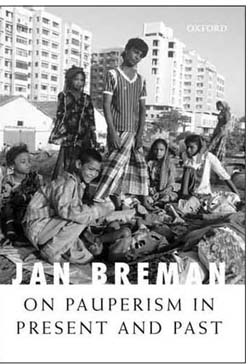The book under review by Jan Breman, one of the most significant contributors to the literature in the Indian subcontinent on the rural economy in the past several decades, is a departure from, yet connected to the area of rural economy. Explaining this the author remarks that despite conducting the large part of his almost five decades of research in Gujarat, it was this study which made him ‘realize more than before that the limited time spells that the labour migrants stay in the city’ (due to their expulsion from agricultural work), ‘are linked not only to the way the labour market operates at the bottom of the informal economy but also and to no lesser extent due to political and administrative barriers in establishing a foothold of sorts. Because of lack of opportunities to make a living, it is in reality as good as impossible for a landless labourer or marginal landowner to leave the countryside for good and settle in the city’ (p. 98).
Links between neoliberal pattern of cityrenewal, informality and poverty has been a focus of several studies. Several of them have pointed towards the city’s desire to move away from the image of slums and squalor; informality as a ‘key feature’ of Indian urbanization and the forced eviction of those who do not fit in the bourgeoisie grandiose design of urban renewal. Breman’s current work is in continuity with such works and he finds fault with the growing social Darwinistic tendencies of the middle class inhabitants of cities who support policies targeted at clearing the city of the undeserving poor and denying them the rights of urban citizenship (p. 97). Breman’s study becomes more important in the context that Gujarat has been reportedly witnessing continual economic growth for decades and ‘what is labelled as “Gujarat model of growth, development and governance” has with the electoral victory of the BJP and its leader Narendra Modi as Prime Minister in 2014 become the nation-wide menu’ (p. 72).

